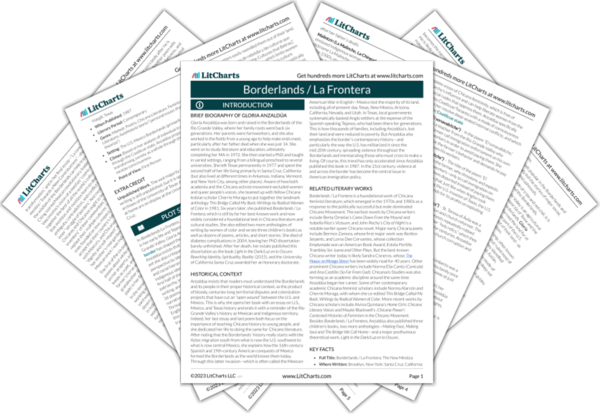Previous
Part 1, Section 5: How to Tame a Wild Tongue
|
Previous
Part 1, Section 5: How to Tame a Wild Tongue
|
Borderlands / La Frontera: Part 1, Section 6: Tlilli, Tlapalli / The Path of the Red and Black Ink Summary & Analysis |
Next
Part 1, Section 7: La conciencia de la mestiza / Towards a New Consciousness
|
